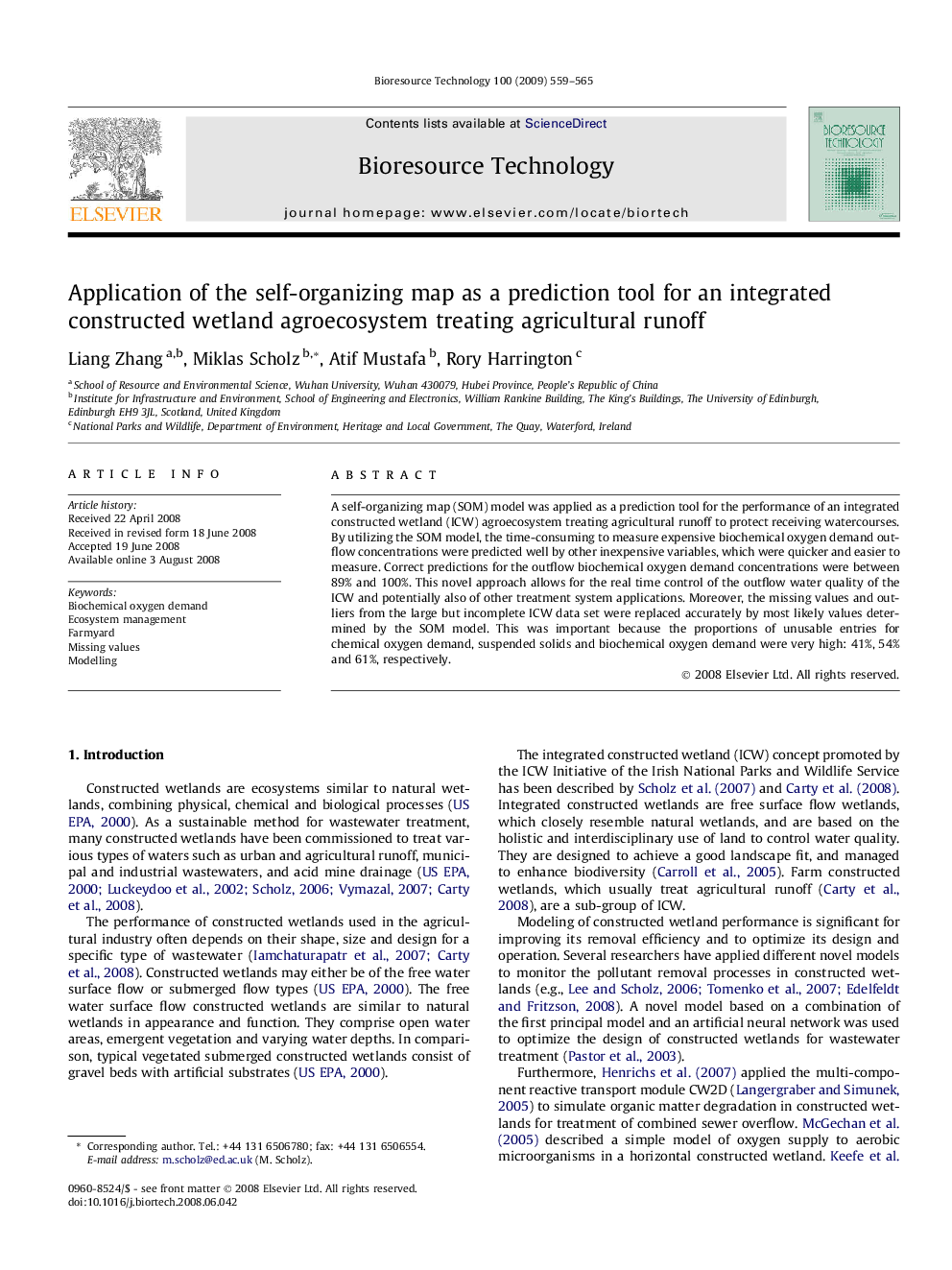| Article ID | Journal | Published Year | Pages | File Type |
|---|---|---|---|---|
| 683724 | Bioresource Technology | 2009 | 7 Pages |
A self-organizing map (SOM) model was applied as a prediction tool for the performance of an integrated constructed wetland (ICW) agroecosystem treating agricultural runoff to protect receiving watercourses. By utilizing the SOM model, the time-consuming to measure expensive biochemical oxygen demand outflow concentrations were predicted well by other inexpensive variables, which were quicker and easier to measure. Correct predictions for the outflow biochemical oxygen demand concentrations were between 89% and 100%. This novel approach allows for the real time control of the outflow water quality of the ICW and potentially also of other treatment system applications. Moreover, the missing values and outliers from the large but incomplete ICW data set were replaced accurately by most likely values determined by the SOM model. This was important because the proportions of unusable entries for chemical oxygen demand, suspended solids and biochemical oxygen demand were very high: 41%, 54%, and 61%, respectively.
